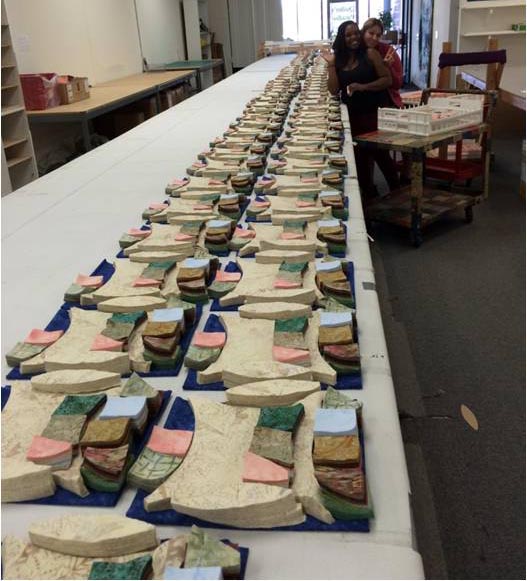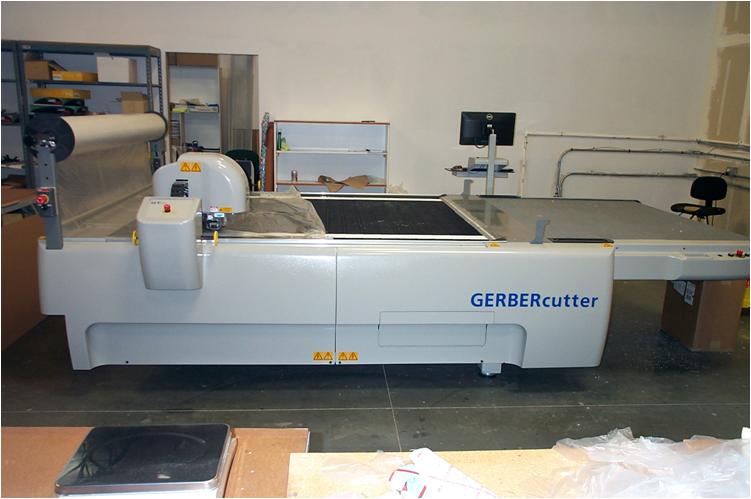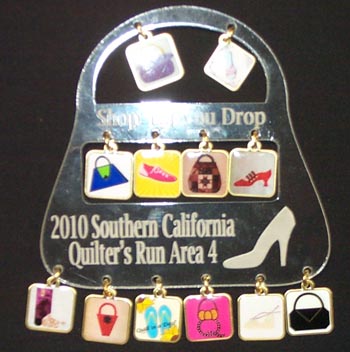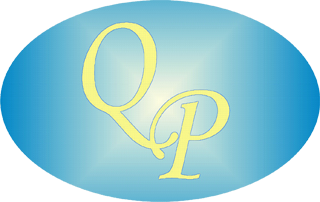Cutting and Kitting Services
Frequently Asked Questions
General
Why should I use cutting and kitting services instead of doing them myself?
This is the classic "make vs. buy" decision that each business must answer for itself given its own unique circumstances and situation.
Cutting and kitting sound and look simple,
but require significant investment (labor, space, tools/equipment, etc.) and know-how to do right and cost-effectively in volume.
We've already made those investments and have many years of experience satisfying many demanding customers.
A key thing to consider is the "opportunity cost" in doing it yourself ...
that is, consider what you could be doing and investing in -
such as merchandising, marketing, selling, serving your customers -
instead of doing the cutting and kitting yourself.
Do you have quilting and sewing expertise?
Yes!
We have people on staff who are experienced and expert quilters, have designed patterns, do Longarming and have taught classes.
We use this expertise to provide additional value to our customers, such as:
What kind of kits can you make?
Simply put: pretty much any kit you want.
 We are the only company that can offer the full range of pre-cuts and kits - and in large volumes.
Not only do we make standard pre-cuts,
such as 5" and 10" squares, 2-1/2" strips and fat quarters,
but our computer controlled Gerber cutter can cut virtually any shape you want
including half-square triangles (with the tips cut off), rectangles and hexagons ...
even curved shapes such as circles, Drunkard's Path, melon ... and much more!
For kits,
we make cut yardage, laser-cut appliqué, and fully pre-cut pieced kits.
We are the only company that can offer the full range of pre-cuts and kits - and in large volumes.
Not only do we make standard pre-cuts,
such as 5" and 10" squares, 2-1/2" strips and fat quarters,
but our computer controlled Gerber cutter can cut virtually any shape you want
including half-square triangles (with the tips cut off), rectangles and hexagons ...
even curved shapes such as circles, Drunkard's Path, melon ... and much more!
For kits,
we make cut yardage, laser-cut appliqué, and fully pre-cut pieced kits.
How much does the service cost?
Each job is unique and the cost depends on your requirements.
The total cost consists of two main parts:
We provide you a free, written cost estimate based on the design you submit to us that you want cut.
How long will it take to get my job done?
It depends on the size and complexity of the job
as well as what is already scheduled for cutting.
However, once we have all the materials in hand,
the great majority of jobs are completed within 2-3 weeks,
1-2 weeks for smaller jobs.
When we prepare a cost estimate for you,
we will also give you an estimate of how long it will take us to complete the job.
If you require a job to be done on an expedited basis,
we will attempt to work this out with you.
Please be sure to take into account shipping times when doing your planning.
How are materials and goods shipped to and from you?
We can accommodate receiving and shipping a few boxes, to many pallets to a full shipping container.
Shipments from FedEx, UPS, USPS and a number of trucking companies come to and go from our facility every day.
We will work with you to determine the most cost-effective method to meet your needs.
How do I determine how much yardage is needed for a project?
Based on the quantity that you require,
we will do the calculation for you.
That calculation takes into account the cutting layout that we develop that optimizes the use of the fabric
and it also takes into account the need for a small amount of overage to account for such things as fabric flaws.
Can you take bolts and rolls of fabric?
Yes.
In developing the price for your job,
we will tell you whether bolts or rolls (aka ROT which stands for "Rolled on Tube") are preferred.
To save time and shipping costs, can I have a manufacturer ship fabric and materials directly from their warehouse to your facility?
Yes!
This is something that's routinely done.
And, we are located near a number of well-known fabric manufacturers.
Also, to save time and shipping costs, can you drop ship directly to my customers or fulfillment centers?
Yes.
Cutting
What do you use to do the cutting?
What we use depends on the job's requirements.
If all that's required is to cut yardage from a bolt or roll of fabric,
this is generally done using electric hand cutters or possibly a rotary cutter.
If specific shapes are being cut,
we our state-of-the-art lasers and Gerber Cutters.
These machines are computer controlled and are very accurate.
As summarized in the table below,
each machine has certain attributes and strengths that make it more appropriate for some jobs than the other.
| Attribute | Laser | Gerber Cutter |

|

|
|
| Computer controlled | Yes | Yes |
| Cutting Mechanism | Light beam (heat) | Auto- and self-sharpening blade |
| Cutting Area Size | 18" x 24" |
70" x 80"
Can be extended using the "cut and advance" feature. |
| # 100% Cotton Layers Cut Simultaneously | Up to 10 | Up to 100 | Design Intracacy | Very intricate | Moderately intricate |
How do these machines compare to die cut machines?
The biggest difference is flexibility and speed: both the lasers and Gerber Cutters are computer programmable meaning they'll cut whatever shape you draw. And, they cut quickly and accurately. By contrast, a die cut machine uses fixed size and shape dies. If you want to cut a particular shape, you need to have a die that exactly matches that shape - which may require the manufacturer to make a custom die for you (assuming they're willing). Also, except for costly, higher end commercial die cut machines, a human must physically operate the machine to make it cut. Years ago, we owned an AccuCut die cut machine which was great for low volumes of a limited number of shapes, but not appropriate for higher volumes.
How large of a piece of material can be cut by the machines?
The size is limited by the size of the cutting area - see the table above.
What materials can be cut?
Woven and non-woven fabrics can be cut including:
- Organic - cotton, wool, leather, silk.
- Synthetic - polyester, rayon, nylon, vinyl leather.
Who provides the fabric and materials for the kits?
When performing a service job, the customer provides the fabric and materials (e.g., pattern, notions, embellishments). Once we lay out how the job is to be cut, we inform the customer how much yardage is needed based on the desired quantity of kits.
Packaging materials can be supplied by either the customer or by us; this is something that we discuss with you up front.
Packaging
Packaging is important to me. Is this something you will work with us on?
Yes! We understand that "presentation matters" and, hence, packaging is very important. We also understand that there are cost constraints and so the goal is to find a solution that both presents well and is cost-effective. We spend time up front with you to understand your requirements and what you want to achieve. Then, we work with you to come up with the best possible packaging solution for your project.
What packaging capabilities do you have?
At a general, high level, below is a list of the typical packaging items that are discussed:
- Bags and boxes - there are many, many types of bags and boxes and we will work with you to explore options and select the best alternative.
- Shrink wrap - we own and operate a shrink wrap machine.
- Banding - we own and operate a banding machine that can wrap a product with a clear plastic band.
- Tying - as an alternative to banding, a product may be tied using ribbon or twill.
- Labeling and tagging - we work with you to determine what labels and tags, if any, need to be applied.
- Barcoding - if your product needs to be barcoded, we can help you with that.
Templates and Rulers
Tell me more about the acrylic plastic that you use to cut.
We use high-quality, cast acrylic plastic that is commonly referred to as "Plexiglass". Rulers and templates use 1/8-inch thick acrylic which is the same thickness as the rulers and templates quilters and sewers use with a rotary cutter to cut their fabric. The most common colors, by far, that we use are clear and transparent fluorescent green (a yellow-green). Other colors are possible upon request.
What do I need to provide you to cut a template or ruler?
There are 4 basic things we need to know:
-
Shape
Ideally, what we need is a drawing that is to scale. (Inclusion of dimensions and angles is always helpful.) A "vectorized" computer drawing is best: preferred file formats are ai, cdr and pdf; other file formats, such as dwg and dxf can be provided. If a hardcopy drawing is being provided, it is best to do so on graph paper; however, our accuracy is only as good as the drawing. If what is to be cut is a very simple shape, such as a square or circle, you can simply provide us the shape's dimensions.
-
Engraving and holes
If you want such things as words, numbers, lines or a graphic (e.g., your logo) engraved, we need to know exactly what you want. If you want one or more holes cut into the shape, such as for hanging the template/ruler on a pegboard or for marking purposes, these need to be specified.
-
Color
As mentioned above, the most common colors are clear and transparent fluorescent green, with clear being the less expensive of the two. Fluorescent green is a yellow-green and is best if there are markings that need to be clearly visible to the user. If you desire a different color, please let us know and we will work with you to find the best color.
-
Quantity
How many of the ruler/template that you want.
Have you cut acrylic for things other than templates and rulers?
Yes! We have custom-engraved our CutRiteTM HandiRuler and have worked on several custom projects that will hopefully inspire you and give you an idea of the wide range of possibilities!
-
Name tags
We have made name tags for companies and organizations, such as quilt guilds, out of clear, acrylic plastic with each individual's name engraved on it.
-
Charm holders
We have made charm holders out of clear, acrylic plastic for quilt runs where each shop in the run gave away a free charm (see picture at right).
-
Purse and bag bottoms
A very popular product that we cut is purse/bag bottoms, cut to the customer's exact dimensions.
Do you provide screen printing capabilities?
Not at this time. The templates and rulers that we have produced to date have writing and lines engraved onto them by the laser (versus being screen printed). There are 2 main advantages to engraving versus printing:
-
Accuracy
When silk screening, the acrylic pieces are first cut and then silk screened by a separate machine. This requires that the silk screening process be very exact when lining up the machinery with the piece to be printed so the markings and letters are printed precisely where they need to be. Based on input from some of our customers, while this works most of the time, errors do occur. When doing engraving, the engraving and cutting are all done by the same machine based on the same digital drawing so no errors occur.
Also, of note, the engraving is done on the back, or bottom, of the template/ruler to eliminate so-called parallax errors. When engraved this way, the markings are physically touching the surface of the material to be cut or measured. It doesn't matter whether you view the marking from an angle or straight down; the marking's apparent position on the material doesn't change thereby ensuring accuracy. However, if the engraving is on the top of the template/ruler, the marking is separated from the material by about 1/8". Hence, when you view the marking from an angle versus straight down, it's apparent position on the material changes slightly.
-
Durability
Silk screen markings can wear off over time; engraved markings do not.
If you have a project that might benefit from our laser cutting services, please contact us for a free estimate!
| Home | Our Story | Contact Us | Privacy Policy | FAQs | View Cart | Checkout |
| Follow us |
| |||||
|
Join our newsletter!
|
Web site last updated October 30, 2023
Copyright © 2024 Quilter's Paradise. All rights reserved. Please report any web site comments or problems via our Contact Us page. |
All products made and services performed in the USA

|
| Consumer | Business | |||
| Kits and More | Notions and Tools | Free Software Tools |
Services
|
|
